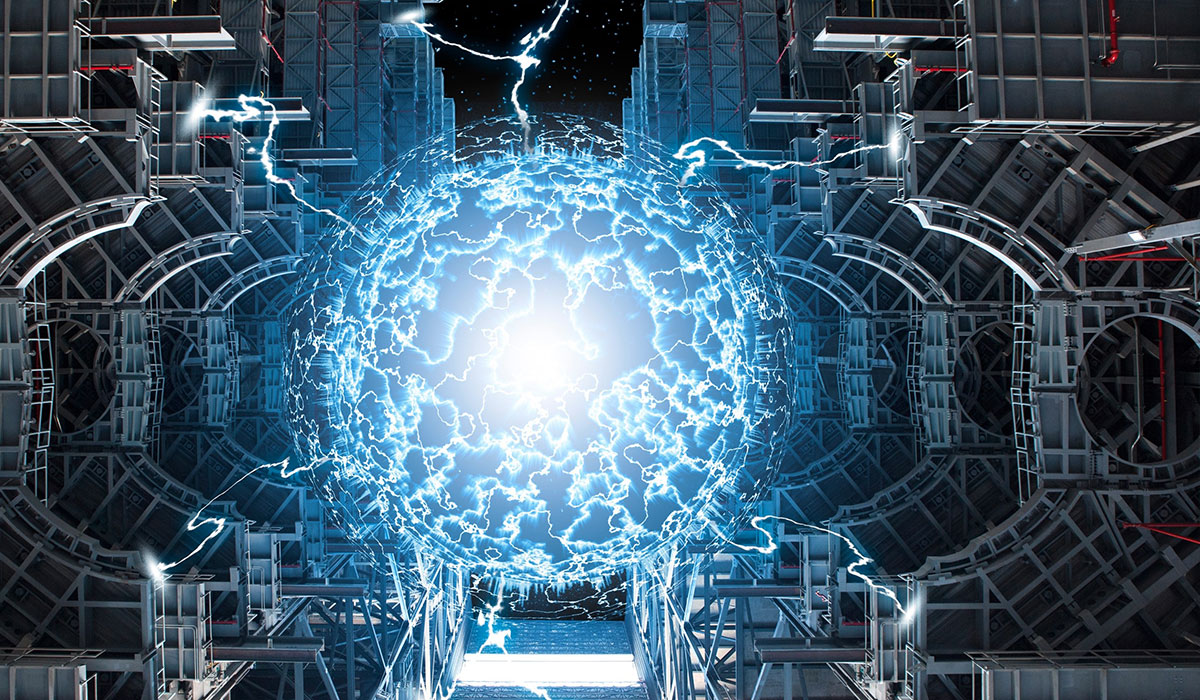Fission is a nuclear technology based on splitting one large atom into two smaller atoms whilst Fusion is the fusing of two light atoms into a larger one.


Three different technologies can be used

Watch the Video about Magnetised target fusion
Fusion Power: Advantages and Challenges
Advantages
- Exceptionally high-density energy
- Process intrinsically safe: no uncontrolled fission reactions, no risk of fuel meltdown or large radioactive releases
- No production of high-level radioactive wastes; Neutrons involved in the D-D and D-T reactions will create low-level radioactive waste
- Virtually limitless energy supply:
- Hydrogen, deuterium and boron are abundant on earth
- Tritium can be produced (using lithium)
- Helium-3 can be found on the moon�(or produced)
| Challenges
- Achieve the triple product for the reaction:
T°C: very high temperature (~100k°K) to heat plasma
p : sufficient plasma particle density t: sufficient confinement time (minutes for magnetic confinement, microseconds for inertial confinement)
- In parallel maintain low-temperature (<30°K) superconductors for magnetic confinement
- New types of superconductors, including high-temperature (70-100°K) superconductors are being developped
- Find resistant material able to sustain high temperature + radiations + neutron embrittlement
- Reach energy gain* by managing the triple product: never been reached experimentally so far.
* Energy output should be higher than energy input |

|
At a global level, many publicly-funded R&D projects are linked to ITER and focus on the triple product, superconductors and the plasma heating…
The challenge of the climate change is inciting private equity funds to invest in demonstrators construction all over the world which is new. The race is on for 2030!
More than 25 fusion start-ups planning to produce a demonstrator by 2030s using approaches different from ITER (compact and simple reactors, different technologies,…). Will they reach commercial viability
The challenge of the climate change is inciting private equity funds to invest in demonstrators construction all over the world which is new. The race is on for 2030!
Bibliography
[67] ITER website. http://www.iter.org
[68] Moir R.W. et al., 2003. Spheromak magnetic fusion power plant with thick liquid-walls. Fusion Science and Technology, 44, 317-326.
[69] Klinger T. et al., 2019. Overview of first Wendelstein 7-X high-performance operation. Nuclear Fusion 59, vol. 11.
[70] Lawrence Livermore National Laboratory, LLNL. Inertial Confinement Fusion: How to Make a Star.
[71] Deezen.com, 2020. AL_A reveals plans for world's first magnetised fusion power plant.
[72] Fusion Energy Base, 2019. Measuring Progress in Fusion Energy: The Triple Product.
[73] Fusion Energy Base, 2020. Funding to Fusion Energy Companies Since 2000.
[74] Fusion Energy Base, 2020. The Number of Fusion Energy Startups is Growing Fast – Here's Why.
[75] NuclearNewswire, 2021. MIT ramps 10-tons magnet up to 20 tesla in proof of concept for commercial fusion.
[76] neimagazine.com, 2021. Targeting a Fusion Demonstration Plant.
